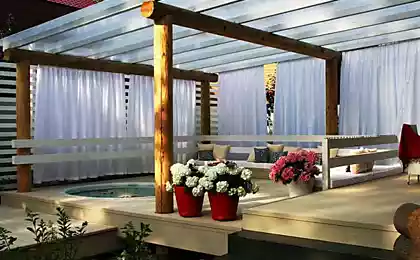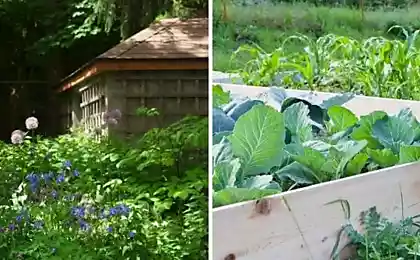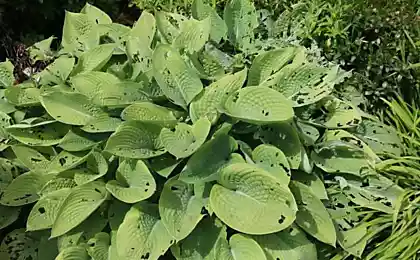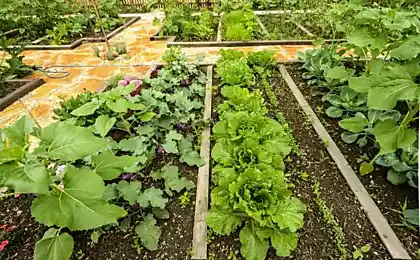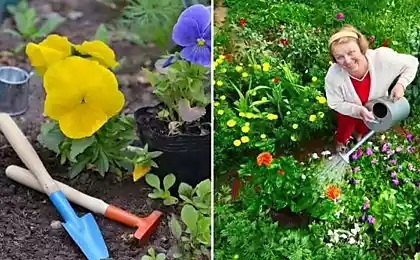150
I arranged a "bar" for slugs in the country, showing what I pour and how I invite guests with character.
The second plague after the coronavirus this summer, summer residents call red slugs. Scientifically, the voracious gastropod mollusk is called Arion lusitanicus, or Spanish slug. It came to us with imported fruits, much larger than the usual gray size, has a rare fecundity and, what is worse, has no natural enemies in our latitudes. All of the above forces gardeners to look for an answer: how to deal with slugs and protect crops from them?
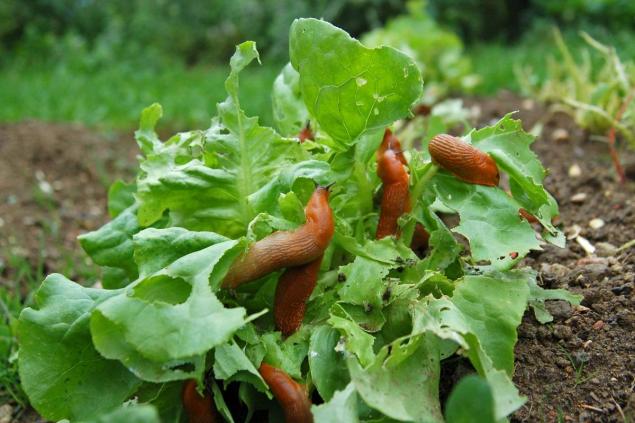
This year, the population of red slugs has grown to an alarming size due to the warm winter and rainy spring.

Colonies of harmful foreigners devour vegetable crops, but do not disdain hosts, irises, lilies, dahlias.
Slug cleaners like moist shady areas where there are a lot of weeds and plant waste. Therefore, try to remove in time the top, cut grass and other debris in which shellfish or their eggs can hide.

© Phere Do not place compost piles near the beds. Digging the area in late autumn so that the pest eggs freeze in winter. Water the plants in the morning, not in the evening. Regularly remove weeds, in the shade of which slugs live freely.
The most effective way to combat insidious pests are chemicals. But not all of them are equally safe for humans and pets. For example, the UK announced a complete ban on the popular pesticide metaldehyde. According to environmentalists, it poses a serious threat to birds, bees and beneficial insects.
View this post on Instagram
A post shared by Hus | Hage | DIY (@nr_240)
Instead, it is proposed to use preparations based on iron phosphate: UliCid, Ferramol (Neudorf), Natria snigelmedel (Bayer), SnigelGift (Greenline). Granules of the drug should be scattered on the surface of the soil at the rate of 5 grams per square meter. And it is better to do this in May, when small slugs only begin to appear from overwintering eggs.
To cope with the invasion of slugs, people often use ordinary table salt. But generously sprinkling her beds, you risk getting saline soil, which will not grow even grass.
The most reliable way to solve the problem is to do everything with your own hands. With the onset of evening coolness, arm yourself with a flashlight, plastic bag and scissors. Pests can carry parasites, so gloves will be needed to protect the hands.
View this post on Instagram
A post shared by Hus og hage på Dyet (@lillehvitehuset)
Pick up the slugs, cut in half and put them in a bag. You need to throw them into ordinary garbage, in any case not a compost pile, since its relatives prone to cannibalism can slide onto the smell of a dead slug.
The previous method is good for a small bed, but on a large plot to collect all the slugs manually is almost impossible. To simplify the task will help traps. And the bait in them will be ... a foamy drink that quenches thirst so well in the summer heat.
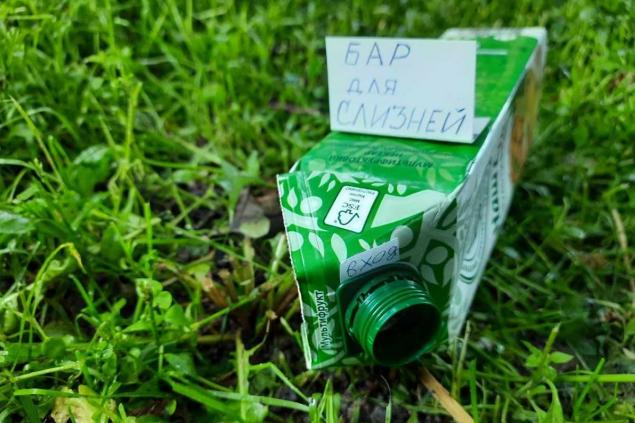
You can pour it into a cardboard bag of juice. And you can make a trap from a plastic bottle, cutting off its top and inserting a neck into the hole.

Slugs attracted by the smell will slide into the bottle, and they will not be able to get out of it. To hunt slippery pests, you can put something in the garden that they love, such as cabbage leaves. And in the morning, collect from them a whole collection of uninvited guests.
Some gardeners use a plate of Coca-Cola as a trap. The aroma of the drink attracts snails and slugs, and orthophosphoric acid, which is part of the composition, destroys them.
Natural enemies willingly eat chicken and duck slugs. But, firstly, they can not cope with large individuals, and secondly, they can trample your entire crop. Slugs like to eat hedgehogs and frogs. So if you manage to settle a family of hedgehogs on the site, the problem will be solved without much effort.
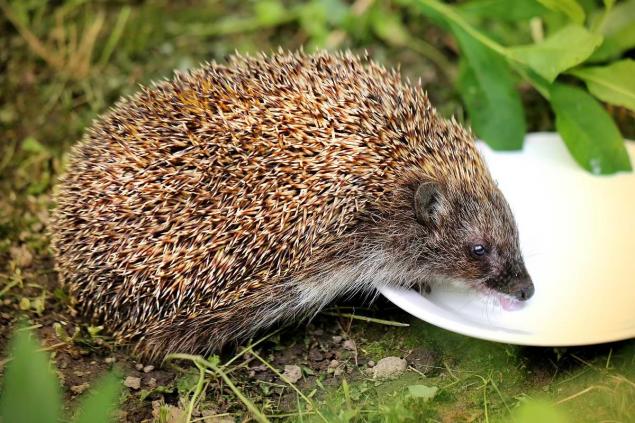
In Europe, to combat gastropods, drugs are used (for example, the English Nemaslug), containing microscopic nematode worms - natural enemies of slugs and snails. Parasitic nematode is not dangerous for people, pets and earthworms, but allows you to get rid of creeping pests forever.

This year, the population of red slugs has grown to an alarming size due to the warm winter and rainy spring.

Colonies of harmful foreigners devour vegetable crops, but do not disdain hosts, irises, lilies, dahlias.
Slug cleaners like moist shady areas where there are a lot of weeds and plant waste. Therefore, try to remove in time the top, cut grass and other debris in which shellfish or their eggs can hide.

© Phere Do not place compost piles near the beds. Digging the area in late autumn so that the pest eggs freeze in winter. Water the plants in the morning, not in the evening. Regularly remove weeds, in the shade of which slugs live freely.
The most effective way to combat insidious pests are chemicals. But not all of them are equally safe for humans and pets. For example, the UK announced a complete ban on the popular pesticide metaldehyde. According to environmentalists, it poses a serious threat to birds, bees and beneficial insects.
View this post on Instagram
A post shared by Hus | Hage | DIY (@nr_240)
Instead, it is proposed to use preparations based on iron phosphate: UliCid, Ferramol (Neudorf), Natria snigelmedel (Bayer), SnigelGift (Greenline). Granules of the drug should be scattered on the surface of the soil at the rate of 5 grams per square meter. And it is better to do this in May, when small slugs only begin to appear from overwintering eggs.
To cope with the invasion of slugs, people often use ordinary table salt. But generously sprinkling her beds, you risk getting saline soil, which will not grow even grass.
The most reliable way to solve the problem is to do everything with your own hands. With the onset of evening coolness, arm yourself with a flashlight, plastic bag and scissors. Pests can carry parasites, so gloves will be needed to protect the hands.
View this post on Instagram
A post shared by Hus og hage på Dyet (@lillehvitehuset)
Pick up the slugs, cut in half and put them in a bag. You need to throw them into ordinary garbage, in any case not a compost pile, since its relatives prone to cannibalism can slide onto the smell of a dead slug.
The previous method is good for a small bed, but on a large plot to collect all the slugs manually is almost impossible. To simplify the task will help traps. And the bait in them will be ... a foamy drink that quenches thirst so well in the summer heat.

You can pour it into a cardboard bag of juice. And you can make a trap from a plastic bottle, cutting off its top and inserting a neck into the hole.

Slugs attracted by the smell will slide into the bottle, and they will not be able to get out of it. To hunt slippery pests, you can put something in the garden that they love, such as cabbage leaves. And in the morning, collect from them a whole collection of uninvited guests.
Some gardeners use a plate of Coca-Cola as a trap. The aroma of the drink attracts snails and slugs, and orthophosphoric acid, which is part of the composition, destroys them.
Natural enemies willingly eat chicken and duck slugs. But, firstly, they can not cope with large individuals, and secondly, they can trample your entire crop. Slugs like to eat hedgehogs and frogs. So if you manage to settle a family of hedgehogs on the site, the problem will be solved without much effort.

In Europe, to combat gastropods, drugs are used (for example, the English Nemaslug), containing microscopic nematode worms - natural enemies of slugs and snails. Parasitic nematode is not dangerous for people, pets and earthworms, but allows you to get rid of creeping pests forever.
What can not be done on the Trinity pious hostess
I plan a weekend in Kiev, where I will definitely go and where I will stay, so that Ukrainian cuisine is nearby.


